TL;DR
Most corporate learning still stops at “training.” Bob Mosher argues the real value—and the winning strategy for L&D—lies in architecting performance in the flow of work. Using the Five Moments of Need (New, More, Apply, Solve, Change), he advocates designing from the workflow back, minimizing the training footprint, and building a digital coach that scales mentorship. With AI accelerating content generation and knowledge capture, L&D must evolve from order-takers to performance architects who deliver measurable impact.
Listen here!
“Training data isn’t work data. Businesses want hard correlation to performance.”
Why Bob Mosher’s Perspective Matters
Bob Mosher has lived nearly every corner of learning: elementary teacher in New York, startup trainer, Senior Director of Learning Strategy Evangelism at Microsoft, and now co-founder at Apply Synergies. He helped oversee programs that certified 9+ million technologists per year—and still saw a critical gap: people could pass tests yet struggle to perform on the job. That gap—and his partnership with Dr. Conrad Gottfredson—sparked a 20-year shift from instructional design to performance architecture.
“I don’t consider myself L&D anymore. I’m a performance architect.”
The Core Problem: We Over-Index on Events, Under-Serve the Work
Traditional L&D excels at courses, classes, and certificates—events that focus on “New” and “More.” But most adult learning needs sit elsewhere: applying knowledge in context, solving problems, and adapting to change. When our solutions end at the classroom or LMS, impact is hard to measure beyond completions and smile sheets. Business leaders care about competence, KPIs, and ROI.
Common symptoms of the gap:
- Certifications without job-readiness
- High consumption, low transfer
- Difficult or indirect links to performance metrics
- L&D perceived as a cost center rather than an investment
“If you stop at training, it’s hard to move into the work.”
The Five Moments of Need—Explained for Busy Leaders
The Five Moments of Need framework reframes when and how learning should happen:
- New – Learning something you’ve never encountered before (rare for experienced adults).
- More – Expanding existing knowledge (far more common in role changes or new products).
- Apply – Performing tasks accurately and confidently in the workflow.
- Solve – Handling exceptions, errors, or edge cases.
- Change – Keeping up with updates in tools, processes, policies, and context.
Traditional training addresses New and More well. But Apply, Solve, and Change are where performance is forged—and where L&D must design first.
“Design from performance back. Optimize the workflow learning environment, and do training where necessary.”
From Training First to Performance First: The Design Pivot
Mosher and Gottfredson’s methodology centers on three practical analyses that flip the sequence:
1) Rapid Workflow Analysis (RWA)
Start by mapping the real work—processes, tasks, and supporting knowledge. Resist the urge to jump to courses. You can’t design for performance if you haven’t modeled it.
Outcome: A visible, agreed-on picture of what people actually do (not just what they should know).
2) Critical Skills Analysis (CSA)
Decide what must be trained versus what can be learned in the flow. Use a failure-risk rubric: if failure could cause harm, legal exposure, safety incidents, or major financial loss, it’s targeted training. Everything else can be supported in the workflow.
Outcome: A defensible, lean training footprint and a clear case for learning-in-the-flow.
3) Build the Digital Coach
Create a digital coach—a structured, always-current, task-first guidance layer that lives where work happens. Think two-clicks/ten-seconds: the minimum path to the next best action, with deeper links when needed.
Outcome: A scalable alternative to one-on-one mentorship that accelerates competence → expertise.
“The most powerful way adults learn is experiential—guided at the edge of failure. A digital coach scales that mentorship.”
Mastery, Competence, Expertise: The Practical Ladder
- Mastery: Conceptual understanding and guided practice (often achieved in training).
- Competence: Transfer and contextual application on the job.
- Expertise: Automaticity, generalization, and coaching others.
Traditional programs often stop at mastery. The digital coach and workflow-centric design carry learners through competence, toward expertise.
What About Transformational Moves (e.g., IC → Manager)?
Not all growth is linear. Moves like engineer-to-manager are transformational—but still leverage existing schemas. Mosher argues these are often misdiagnosed as “start over” training moments. Better: design for Apply/Solve/Change in the new role’s workflow and supplement with targeted training only where failure-risk is high (e.g., legal/compliance for people leaders).
Shortcut: Preserve what’s already known. Avoid “re-teaching Word because the ribbon changed.” Teach the delta and support the application.
AI Is the Accelerator—If L&D Leads, Not Lags
AI (especially generative AI) can dramatically speed up the work that slows L&D:
- SME harvesting & synthesis: Extract and standardize tacit knowledge fast.
- Structured content at scale: Generate task flows, how-tos, and decision trees that feed the digital coach.
- Search and retrieval: Make in-the-flow answers findable in seconds.
- Continuous updates: Keep guidance current as tools, policies, and products change.
“Doctors don’t use leeches anymore. Our responsibility is to remain current. AI is it.”
The risk isn’t AI—it’s risk aversion. L&D has a rare window to move from order-taker to strategic enabler by using AI to ship performance solutions faster and measure outcomes more directly.
Measurement That Holds Up at the Business Table
Shifting the bullseye to Apply/Solve/Change makes impact easier to see and quantify:
- Time to competence (per role/task)
- Error rate / rework reductions
- Throughput or cycle-time gains
- Policy/compliance adherence at moments of risk
- Manager confidence in delegation and readiness
These are work metrics, not learning proxies—and they convert L&D from expense to investment.
Culture Change: From Order-Taker to Performance Partner
Mosher’s most pointed advice is cultural: have the courage to own the conversation. Professionals don’t wait with clipboards for requests for “a five-day course.” They diagnose, prescribe, and deliver outcomes.
“Have some guts. Be the professional who leads the trade, not the order-taker.”
How to start the culture shift:
- Rebrand the function around enablement/performance.
- Meet line leaders in their workflow—co-create task maps and risk rubrics.
- Pilot a digital coach in one critical process; publish before/after metrics.
- Sunset low-impact training and redirect budget to in-the-flow support.
- Instrument the work so learning signals tie to business KPIs.
What Bob Would Tell His Younger Self (And Us)
- Don’t wait for permission: lead with performance.
- Reduce the training default; design for the work.
- Scale mentorship with a digital coach.
- Use AI aggressively where it helps you ship faster with quality.
- Measure what the business values, not what the LMS reports.
“I want to be on the investment side of the ledger, not the expense side.”

